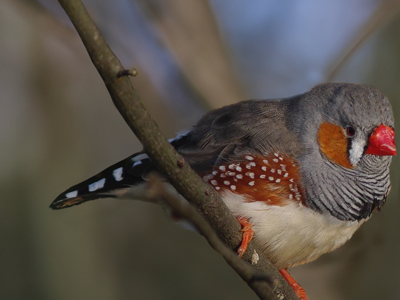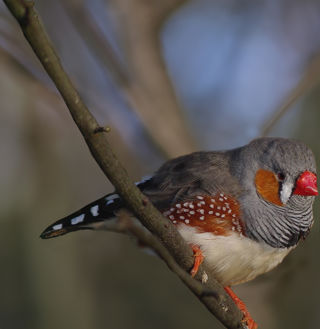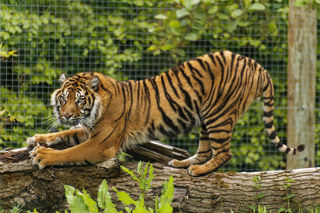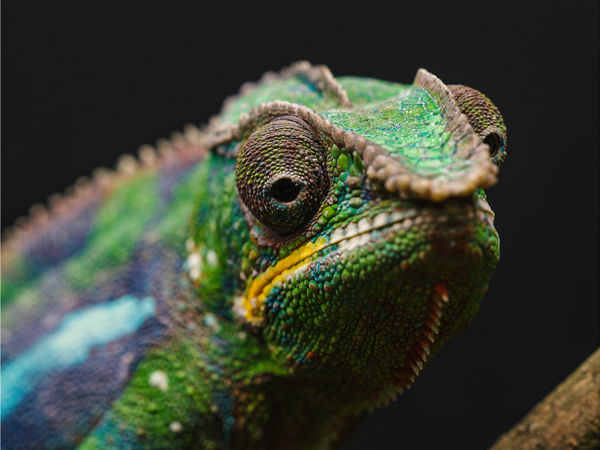
Australian zebra finch
Australian zebra finches are small colourful birds native to Australia. They have mostly grey plumage with a white underside. Both sexes have black and white striped tails and facial markings. Males have a brown and white spotted pattern below the wing, orange cheek patches and a black-striped chin.

Breeding takes place at various times in the year, usually following the onset of heavy rains. Males have a courtship dance to accompany their unique song. The song contains sections of their relatives’ songs mixed with sounds from their surroundings. Females do not sing at all.
Zebra finches pair for life, although DNA tests have shown that they are not always faithful. Both sexes build the nest together in bushes or building cavities. It is constructed from grasses with a side entrance and then lined with soft material such as wool. The parents take it in turns to incubate the eggs and care for the chicks once they are hatched. Chicks will fledge after 20 days and are independent two weeks later.

The diet of the zebra finch is primarily made up of seeds. They use their short, sharp beaks to remove the seeds from their husks. During the breeding season, insects are eaten by the chicks to add extra protein to their diet.
Zebra finches are common and widespread throughout their range. There are no known threats to their population numbers at present. They are a popular pet species due to their bright colours, social behaviour and attractive song. They are also used as a model organism in social and bird song research.
Key Facts:
Conservation Status: Least Concern
Distribution: Australia
Habitat: Grassland
Diet: Insects, Omnivorous, Seeds
Height: 10cm
Weight: 10 – 15g
No. of young: 4 – 6
Life Span: 3 years

SUPPORT OUR ANIMALS
If you're looking for an alternative way to donate to Twycross Zoo, you can help support our animals and our zoo keepers by purchasing something from our Amazon Wishlist!
Updated regularly by our zoo keepers, the items on the list help to provide enrichment for our animals and keep their habitats well maintained.
Every donation helps us as a conservation charity.
